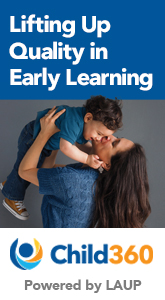ExchangeEveryDay Past Issues
 << Previous Issue
| View Past Issues | | Next Issue >>
<< Previous Issue
| View Past Issues | | Next Issue >> Supporting Children with Challenging Behaviors
May 18, 2018
In a conversation, keep in mind that you're more interested in what you have to say than anyone else is.
-Andrew A. Rooney in Pieces of My Mind
-Andrew A. Rooney in Pieces of My Mind
In her book, Challenging Behavior in Young Children, Barbara Kaiser, one of the experts featured in the Exchange video training resource, Addressing Challenging Behaviors, asserts that “including children with challenging behavior [in our classrooms] is the right thing to do.”
She explains:
“If children are going to learn to function in society, they must be in society. A child who interacts every day with his socially competent peers has many opportunities to learn appropriate ways to behave; and being accepted in a caring, nonviolent classroom community where everyone supports his attempts to act appropriately increases the chance that he’ll meet those expectations.”
Addressing Challenging Behaviors |






Comments (2)
Displaying All 2 CommentsMcKor Shalon Nursery
Cherry Hill, NJ, United States
Again, the quote adds good sense. As article indicates, children learn by example, and being with his peers in a healthy enviornment, greatly helps in positive behavior.
World Forum Foundation
Eugene, OR, United States
Including children with challenging behaviors requires a respectful, flexible, collaborative and empathetic approach. Teachers and students must have appropriate supports. In the best of circumstances, adults work with children to recognize the continuum of positive and negative emotions and physical feelings and the ways to respond to those feelings. Sensory challenges are often at the root of behavior challenges. Consider how lighting, noise, smells, visual and tactile stimuli, and the physical arrangement of space impact a particular child and make creative modifications where possible. You might, for example, take some learning activities outdoors where the space and acoustics may be more forgiving.
Post a Comment